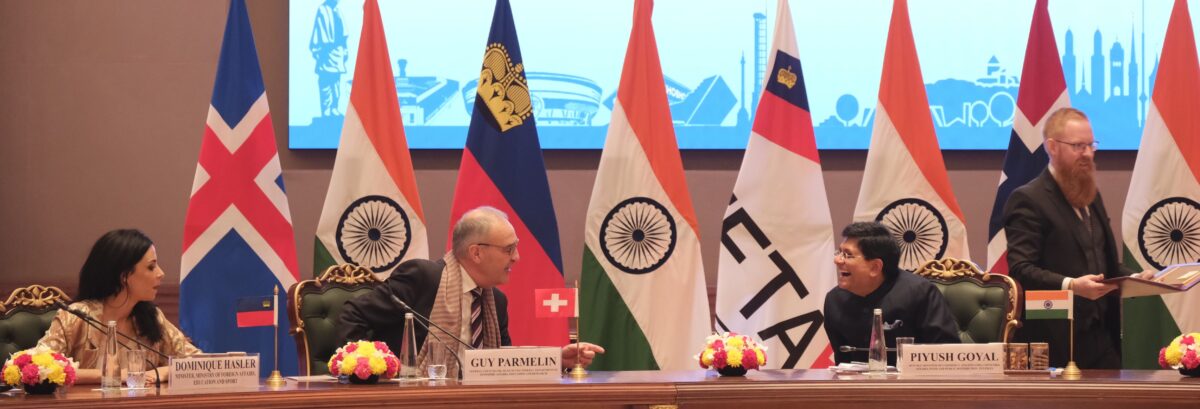India recently inked a historic trade pact with the European Free Trade Association (EFTA), comprising Switzerland, Norway, Iceland, and Liechtenstein, marking the culmination of nearly 16 years of negotiations. Under this landmark agreement, India has committed to lifting most import tariffs on industrial products from the four European countries in exchange for a whopping $100 billion investment over the next 15 years. The announcement comes as a significant milestone in India’s pursuit of boosting exports to $1 trillion annually by 2030.

Trade Minister Piyush Goyal hailed the deal as a game-changer for both India and the EFTA nations. He revealed that the agreement includes provisions for substantial investment from the EFTA countries into India’s burgeoning market, which boasts a population of 1.4 billion people. In return, India will gradually eliminate or significantly reduce high customs duties on 95.3% of industrial imports from Switzerland, excluding gold, thus facilitating smoother trade relations between the parties involved.
Among the EFTA members, Norway stands to benefit immensely from the trade pact. Industry Minister Jan Christian Vestre highlighted the current challenges faced by Norwegian exporters, who encounter steep import taxes of up to 40% on certain goods destined for India. However, with the new agreement in place, Vestre noted that nearly every Norwegian product would enjoy zero import taxes, paving the way for enhanced trade and economic cooperation between the two nations.
Moreover, the deal encompasses modern elements such as intellectual property rights and gender equity, emphasizing its progressive and inclusive nature. Minister Goyal emphasized that the pact is designed to be fair, equitable, and mutually beneficial for all five countries involved. This comprehensive agreement signifies a significant step towards fostering stronger ties and promoting sustainable development across the board.
However, the implementation of the deal hinges on the ratification by all signatories, a process expected to be completed by 2025, according to Switzerland’s plans. Meanwhile, India has committed to reducing its ‘bound tariff rate’ on gold marginally from 40% to 39%, although it anticipates minimal impact on gold imports from Switzerland, which totaled $16 billion in the previous fiscal year.
Swiss economic official Guy Parmelin underscored the immense opportunities that the Indian market presents for trade and investment. Parmelin emphasized that the agreement was the culmination of 21 rounds of negotiations, reflecting the dedication and commitment of both sides to reaching a mutually beneficial arrangement.
India’s bilateral trade with the EFTA countries reached $25 billion in 2023, positioning it as the fifth-largest trading partner for the EFTA bloc. The trade pact not only aims to address immediate trade concerns but also incorporates provisions for sustainable development, ensuring that trade activities align with environmental and social considerations.
Looking ahead, trade economists anticipate that the agreement will not only bolster India’s industrial sectors but also attract major investment in critical areas such as medical devices and clean energy. Bolstered by access to state-of-the-art innovations hailing from the technological hubs of Switzerland and Norway, India stands on the brink of a transformative era, primed not only to escalate its export ventures but also to assert its prominence as a pivotal force within the dynamic landscape of the global marketplace.

In summary, the India-EFTA trade deal marks a significant milestone in India’s journey towards economic growth and prosperity. By forging stronger trade relations and fostering sustainable development, both sides stand to reap the rewards of this mutually beneficial partnership.



